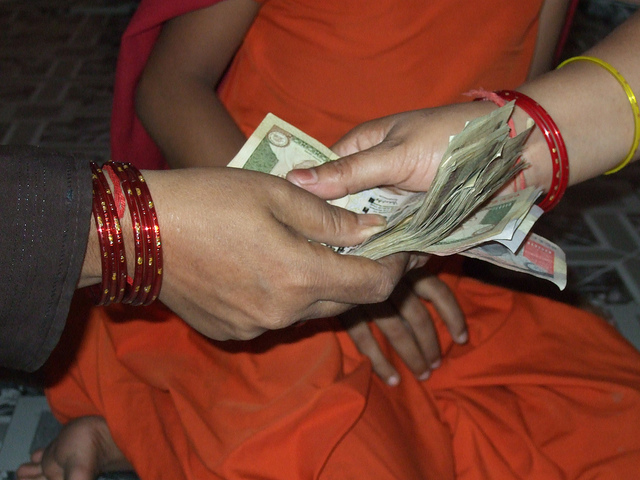
Pradhan Mantri Fasal Bima Yojana is a new crop insurance scheme that was announced by the Government on 13th January 2016. It will be rolled out from June 2016.
This scheme will let farmers pay a very low premium to insure their crops. Farmers will have to pay a premium of only 2% of the sum insured for Kharif crops, 1.5% for Rabi crops, and 5% for horticulture and cash crops. The difference between the premium paid by the farmers and the actuarial premium fixed by the insurance companies will be subsidised and there will be no cap on the maximum subsidy paid by the Government. The subsidy will be borne equally by central and the respective State Government.
Currently, farmers pay around as high as 15 % of the sum insured as premium under the existing National Agricultural Insurance scheme (NAIA) and the modified National Agricultural Insurance scheme (MNAIA). The new scheme will replace all these existing crop insurance schemes.
[You may also read: Financial Inclusion and Pradhan Mantri Jan Dhan Yojana]
Agriculture is the backbone of the Indian economy. Though it contributes to only around 16 % of India’s GDP, it provides employment to around 60 % of our population. Hence, the prosperity of agriculture is linked to the prosperity of the economy. The growth of this sector is an essential prerequisite for inclusive growth as well as poverty reduction in India.
But, Indian agriculture suffers from myriad problems and one of them is excessive risk and uncertainty faced by the farmers. We lack proper irrigation facilities in India. 56 % of the total cropped area in India has no irrigation facilities at all. This makes agriculture highly dependent on the vagaries of monsoon. Two consecutive monsoon failures in 2014 and 2015 and an unseasonal rainfall led to wide-scale crop failure. As per data, 207 districts in 9 states have been hit by drought. It led to farmer suicides due to the inability to repay their debt. Market prices of crops like pulses increased due to this supply-shock.
It is against this backdrop, that a crop insurance scheme to deal with risks associated with weather fluctuation is imperative for alleviating the distress caused to the farmers.
At present, only 23 % of the cropped area in India has access to insurance. Pradhan Mantri Fasal Bima Yojana Scheme envisages covering 50 % of the total cropped area in India
Apart from lowering premiums, there will be no capping on the sum insured by the farmers. This scheme promises to provide prompt and easy settlement of claims through the use of technology like GPS, smartphones, remote sensing, and drones to access actual crop damage. The claim amount will be directly transferred to the bank accounts of the farmers.
The scheme also provides for coverage of post-harvest losses and localised crop losses like hailstones.
The collateral benefit of the scheme could be that banks will be willing to lend more to farmers as the risk of lending to them will reduce due to insurance.
All in all, though the scheme will impose a burden on the exchequer, it is worth paying for the benefits of the farmers as well as the economy.
Update on 12/07/2020: The PMFBY was launched in the year 2016. In the three years up to 2018-19, 5.3 farmers have got Rs 64,541 crore as insurance amounts.
But, there have been reports that insurers are yet to settle as much as a third of the over Rs 15,000 crore claimed by farmers as crop insurance for the Kharif 2019 season. To be sure, almost 100% of the admitted claims eventually get paid — nearly all of the claims pertaining till the years 2017-18 have been settled, whereas the unsettled amounts for kharif and rabi 2018 are only 5.8% and 14% respectively. Yet, the timely release of the amount to the farmers has become important due to the Covid-19 crisis. Therefore, the Central Government has urged the state governments to invoke the penalty clause on insurance companies that have defaulted on settling the claims made by farmers under the Pradhan Mantri Fasal Bima Yojana (PMFBY)
[You may also read: Agricultural Reforms 2020- All you need to know]
Economyria is now on Telegram. For a simplified analysis of topics related to economy/ business/ finance, subscribe to Economyria on Telegram
Why is it that, Agriculture contributes only around 16 % of India’s GDP, whereas it provides employment to around 60 % of the population, whereas at the independence it was much higher?
This is how the economic transition takes place. As a country progresses from a lower per-capital income bracket, the share of agriculture in the GDP decreases, and that of manufacturing and services increases.